Strawberry
Strawberry
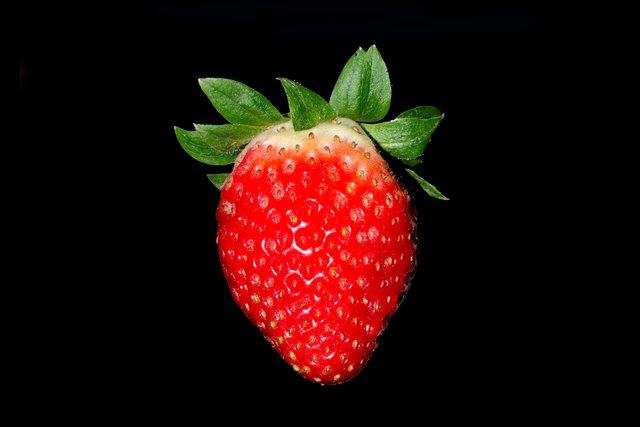
Strawberry_BNC
Photo source
The garden strawberry (or just strawberry; Fragaria × ananassa) is a broadly developed half and half types of the sort Fragaria, all in all known as the strawberries. It is developed worldwide for its natural product. The natural product is broadly refreshing for its trademark fragrance, brilliant red shading, succulent surface, and sweetness. It is expended in vast amounts, either new or in such arranged sustenances as jelly, juice, pies, desserts, milkshakes, and chocolates. Fake strawberry flavorings and fragrances are additionally generally utilized as a part of numerous items like lip gleam, confection, hand sanitizers, scent, and numerous others.
The garden strawberry was first reproduced in Brittany, France, in the 1750s by means of a cross of Fragaria virginiana from eastern North America and Fragaria chiloensis, which was brought from Chile by Amédée-François Frézier in 1714. Cultivars of Fragaria × ananassa have supplanted, in business creation, the forest strawberry (Fragaria vesca), which was the principal strawberry species developed in the mid seventeenth century.
The strawberry isn't, from a herbal perspective, a berry. In fact, it is a total embellishment natural product, implying that the beefy part is gotten not from the plant's ovaries but rather from the container that holds the ovaries.[4] Each evident "seed" (achene) outwardly of the organic product is really one of the ovaries of the blossom, with a seed inside it.
History:
Strawberry_gariguette
Photo source
The principal plant strawberry was developed in Brittany, France, amid the late eighteenth century.[3] Prior to this, wild strawberries and developed choices from wild strawberry species were the regular wellspring of the organic product.
The strawberry natural product was specified in old Roman writing in reference to its therapeutic utilize. The French started taking the strawberry from the woods to their greenery enclosures for gather in the fourteenth century. Charles V, France's ruler from 1364 to 1380, had 1,200 strawberry plants in his regal garden. In the mid fifteenth century western European priests were utilizing the wild strawberry in their lit up compositions. The strawberry is found in Italian, Flemish, and German workmanship, and in English miniatures.The whole strawberry plant was utilized to treat depressive sicknesses.
By the sixteenth century, references of development of the strawberry turned out to be more typical. Individuals started utilizing it for its assumed restorative properties and botanists started naming the diverse species. In England the interest for standard strawberry cultivating had expanded by the mid-sixteenth century.
The mix of strawberries and cream was made by Thomas Wolsey in the court of King Henry VIII.[5] Instructions for developing and collecting strawberries appeared in writing in 1578. Before the finish of the sixteenth century three European species had been refered to: F. vesca, F. moschata, and F. viridis. The garden strawberry was transplanted from the timberlands and afterward the plants would be engendered agamically by removing the sprinters.
Strawberries_chelsea
Photo source
Two subspecies of F. vesca were recognized: F. sylvestris alba and F. sylvestris semperflorens. The presentation of F. virginianafrom Eastern North America to Europe in the seventeenth century is an imperative piece of history since this species offered ascend to the advanced strawberry. The new species slowly spread through the landmass and did not turn out to be totally refreshing until the finish of the eighteenth century. At the point when a French outing traveled to Chile in 1712, it presented the strawberry plant with female blooms that brought about the regular strawberry that we have today.
The Mapuche and Huilliche Indians of Chile developed the female strawberry species until 1551, when the Spanish came to overcome the land. In 1765, an European pioneer recorded the development of F. chiloensis, the Chilean strawberry. At first prologue to Europe, the plants became overwhelmingly yet delivered no organic product. It was found in 1766 that the female plants must be pollinated by plants that delivered vast natural product: F. moschata, F. virginiana, and F. ananassa. This is the point at which the Europeans ended up mindful that plants had the capacity to create male-just or female-just blossoms. As more substantial organic product delivering plants were developed the Chilean strawberry gradually diminished in populace in Europe, aside from around Brest where the Chilean strawberry flourished. The decay of the Chilean strawberry was caused by F. ananassa.
Development:
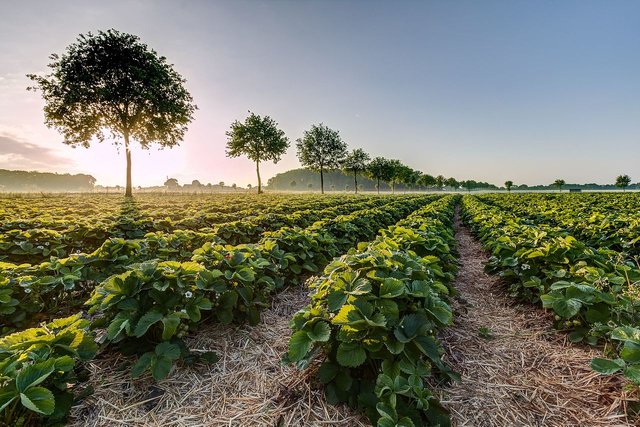
Dülmen,_Kirchspiel,_Erdbeerfeld
Photo source
Strawberry cultivars change generally in measure, shading, enhance, shape, level of ripeness, period of aging, risk to sickness and constitution of plant. By and large, a strawberry has around 200 seeds on its outside film. Some fluctuate in foliage, and some change really in the relative improvement of their sexual organs. By and large, the blooms seem bisexual in structure, however work as either male or female. For motivations behind business creation, plants are proliferated from runnersand, all in all, appropriated as either exposed root plants or attachments. Development tails one of two general models—yearly plasticulture, or a perpetual arrangement of tangled lines or hills. Nurseries create a little measure of strawberries amid the off season.
The majority of present day business creation utilizes the plasticulture framework. In this technique, raised beds are shaped every year, disinfected, and secured with plastic to avoid weed development and disintegration. Plants, for the most part got from northern nurseries, are planted through gaps punched in this covering, and water system tubing is keep running underneath. Sprinters are expelled from the plants as they show up, to urge the plants to put the greater part of their vitality into natural product improvement. Toward the finish of the collect season, the plastic is evacuated and the plants are furrowed into the ground. Since strawberry plants over a year or two old start to decrease in efficiency and organic product quality, this arrangement of supplanting the plants every year takes into consideration enhanced yields and denser plantings. Be that as it may, on the grounds that it requires a more drawn out developing season to take into account foundation of the plants every year, and as a result of the expanded expenses as far as shaping and covering the hills and obtaining plants every year, it isn't generally reasonable in all territories.
Strawberry_Plant_in_early_June
Photo source
The other real technique, which utilizes similar plants from year to year developing in columns or on hills, is most basic in colder atmospheres. It has bring down venture expenses, and lower general upkeep prerequisites. Yields are ordinarily lower than in plasticulture.
Another technique utilizes a fertilizer sock. Plants developed in compost socks have been appeared to deliver altogether higher oxygen radical absorbance limit (ORAC), flavonoids, anthocyanins, fructose, glucose, sucrose, malic corrosive, and citrus extract than natural product created operating at a profit plastic mulch or tangled column frameworks. Comparative outcomes in a prior 2003 examination directed by the US Dept of Agriculture, at the Agricultural Research Service, in Beltsville Maryland, affirms how compost assumes a part in the bioactive characteristics of two strawberry cultivars.
Strawberries are frequently assembled by their blossoming propensity. Customarily, this has comprised of a division between "June-bearing" strawberries, which bear their natural product in the late-spring and "regularly bearing" strawberries, which frequently bear a few yields of organic product all through the season. Research distributed in 2001 demonstrated that strawberries really happen in three fundamental blossoming propensities: short-day, difficult day, and day-nonpartisan. These allude to the day-length affectability of the plant and the sort of photoperiod that actuates bloom arrangement. Day-impartial cultivars create blooms paying little heed to the photoperiod.
Strawberries may likewise be engendered by seed, however this is basically a diversion movement, and isn't generally drilled monetarily. A couple of seed-spread cultivars have been created for home utilize, and research into developing from seed monetarily is progressing. Seeds (achenes) are obtained either through business seed providers, or by gathering and sparing them from the organic product.
Kashubian strawberry (Truskawka kaszubska or Kaszëbskô malëna) are the principal Polish natural product to be given business assurance under EU law. They are delivered in Kartuzy, Kościerzyna and Bytów areas and in the districts of Przywidz, Wejherowo, Luzino, Szemud, Linia, Łęczyce and Cewice in Kashubia. Just the accompanying assortments might be sold as kaszëbskô malëna: Senga Sengana, Elsanta, Honeoye that have been reviewed as Extra or Class I.
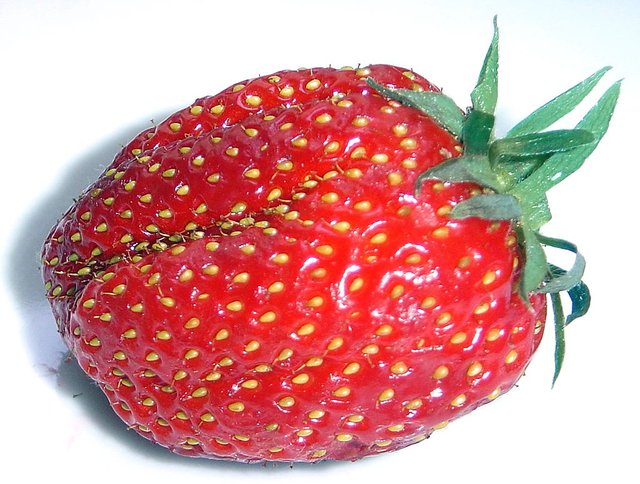
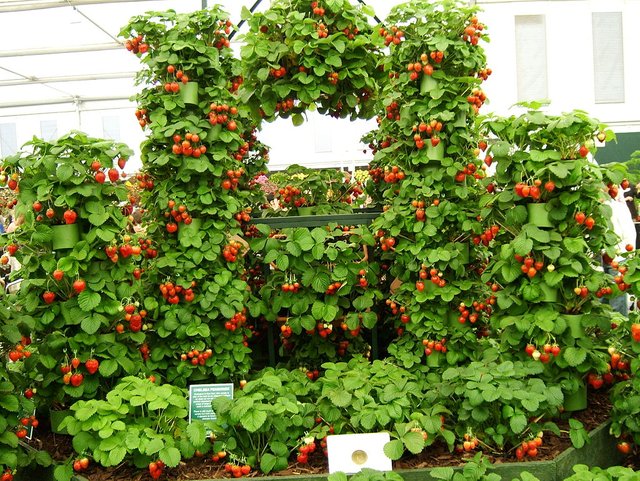
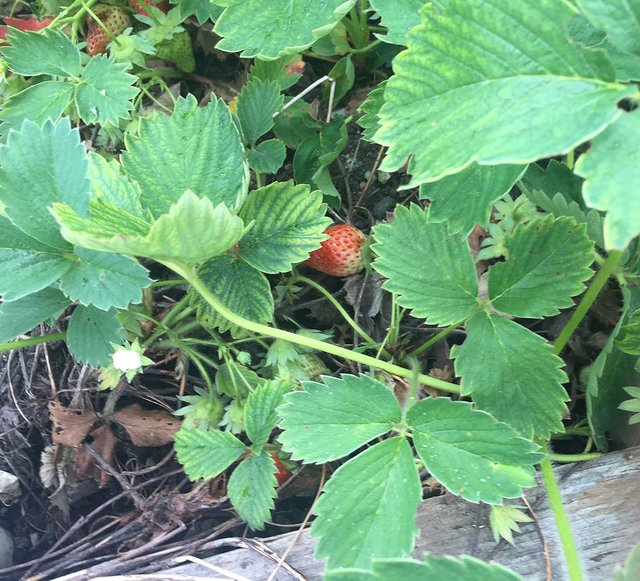
Congratulations @grsalim! You have completed some achievement on Steemit and have been rewarded with new badge(s) :
Click on any badge to view your Board of Honor.
To support your work, I also upvoted your post!
For more information about SteemitBoard, click here
If you no longer want to receive notifications, reply to this comment with the word
STOPDo not miss the last announcement from @steemitboard!
Thank you for your info.